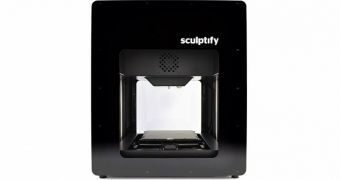3D printers, at least those that use fused deposition modeling technology, or FDM for short, print things by layering plastic, drop by drop, melting filament, usually of 1.75 mm or 3 mm thickness. The David 3D printer is different though.
You see, instead of normal filament, David is designed to use plastic or other materials in pellet form. In other words, very small balls. The FLEX technology is responsible for this.
Sculptify is the company that came up with the technology and invented the David 3D printer. According to them, pellet form extends the list of supported materials.
Not all plastics can last in filament form without stretching unevenly or tearing, crumbling even. Also, no one ever said that FDM 3D printers should only use plastics or nylon in their activities.
In fact, the pellet form will allow Sculptify's David to print things from raw materials instead of processed compounds. In addition to the design variety inherent here, this will also save users money.
Normally, filament costs $20 to $60, or €14.67 to €44 per kilogram, but raw materials like small pellets cost as little as a hundredth of that. One penny on the dollar.
The FLEX technology does make the entire concept incompatible with every printer on the market, though. Mostly because all of them are made with filament in mind, featuring extruders that melt the filament.
With David, Sculptify is trying to completely change how 3D printing is done, essentially establishing a new type of 3D printer altogether. A tall order, so it is no wonder that the folks behind the company can't go further than this on their own.
They have created the FLEX technology and the David 3D printers, but now they need the help the common man to get it off the ground and selling. So onward to Kickstarter they went, or they will soon go there.
Sculptify hasn't posted a crowd-funding campaign yet, but has every intention to do so. The build volume is of 200 x 220 x 185 mm / 7.8 x 8.6 x 7.3 inches, or 8,140 cubic cm / 496 cubic inches. The whole printer itself, David, is made of aircraft aluminum and measures 538 x 502 x 620 mm / 21.2 x 19.8 x 24.4 inches.
In addition to ABS and PLA plastic, you can feed the thing ethylene vinyl acetate, high impact polystyrene, thermoplastic polyurethane, high-density polyethylene, polycarbonate, nylon and wood composites.

 14 DAY TRIAL //
14 DAY TRIAL // 